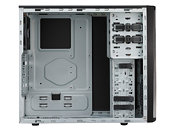
NVIDIA GeForce GTX 590 Launch Date is March 22
The dust seems to have settled down, after AMD's launch of the Radeon HD 6990, extending the red-team's performance lead previously held precariously by the Radeon HD 5970, to the GeForce GTX 580. It looks like NVIDIA will challenge the performance leadership with GeForce GTX 590, a dual-GPU graphics card that uses two GF110 GPUs (the ones on GTX 570 and GTX 580), for an SLI-on-a-stick solution. Rumors of NVIDIA working on this card became concrete as early as in November 2010, when NVIDIA's reference board became public for the first time.
Latest reports suggest that NVIDIA has chosen March 22 as the launch day of GeForce GTX 590. Incidentally, that is also the launch date of EA/Crytek's much-hyped, initially DirectX 9 action/shooter game, Crysis 2. GeForce GTX 590 uses two GF110, though the shader configuration and clock speeds are not known. Since NVIDIA is chasing the top-spot, you can expect the most optimal configuration for the GF110s. A total of 3 GB (1536 MB per GPU system) on board, and NVIDIA's workhorse PCI-E bridge, nForce 200 will be the traffic cop and radio station between the two GPUs. The card will be able to do 3DVision Surround (NVIDIA's multi-display single head technology comparable to ATI Eyefinity) on its own, without needing a second card.
Latest reports suggest that NVIDIA has chosen March 22 as the launch day of GeForce GTX 590. Incidentally, that is also the launch date of EA/Crytek's much-hyped, initially DirectX 9 action/shooter game, Crysis 2. GeForce GTX 590 uses two GF110, though the shader configuration and clock speeds are not known. Since NVIDIA is chasing the top-spot, you can expect the most optimal configuration for the GF110s. A total of 3 GB (1536 MB per GPU system) on board, and NVIDIA's workhorse PCI-E bridge, nForce 200 will be the traffic cop and radio station between the two GPUs. The card will be able to do 3DVision Surround (NVIDIA's multi-display single head technology comparable to ATI Eyefinity) on its own, without needing a second card.






















































